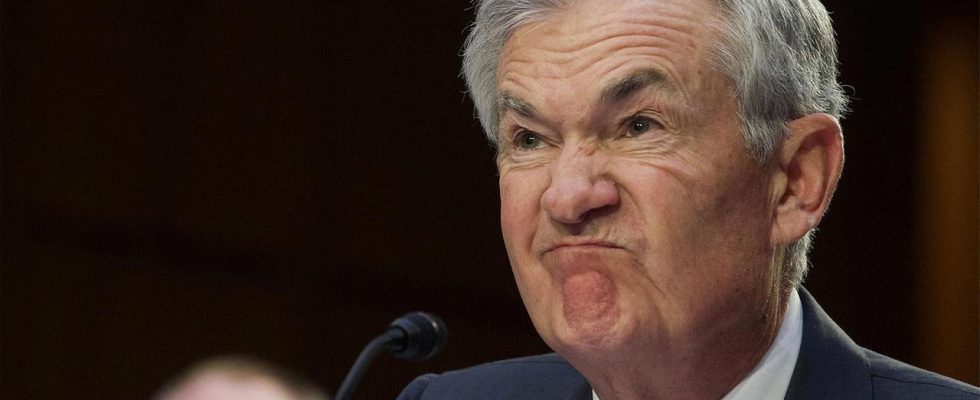background
The Fed is likely to raise interest rates again tonight – possibly for the last time. But hopes of rate cuts later in the year could prove premature.
The Fed’s most aggressive rate hike cycle in history may be coming to an end. Tonight, the US Federal Reserve is likely to raise interest rates for the tenth time in a row. Economists expect a small rate hike of 0.25 percentage points to a range of 5.0 to 5.25 percent. According to market observers, it is likely to be the last interest rate hike by the US monetary authorities around Fed boss Jerome Powell.
Core inflation remains high
The market is now betting on a pause in interest rates and even on rate cuts later in the year. But did he possibly calculate without the Fed? The fact is: the US Federal Reserve is likely to keep its feet still in June to assess the overall effect of the monetary tightening to date. With a historically unprecedented series of rapid interest rate hikes since March 2022, it has tried to get the runaway inflation under control and push the inflation rate back towards its target of 2.0 percent.
So far, however, she has not been really successful with her efforts. The much-noticed core inflation, i.e. the inflation rate excluding the volatile energy and food prices, was still at a high 5.6 percent in March. “The Fed has not yet achieved any resounding success in the fight against inflation,” complain Commerzbank economists Marco Wagner and Bernd Weidenfeld.
Fed does not want to rule out further rate hikes
Against this background, it is hardly surprising that the currency watchdogs themselves have always left the door open for further interest rate hikes. Tonight, Powell is unlikely to signal that the Fed’s tightening cycle is over, stresses François Rimeu, investment strategist at wealth manager La Française AM.
In any case, the market speculation about interest rate cuts in the course of the year is not covered by the latest statements from Fed members. These have repeatedly hinted that the final interest rate – once it has been reached – will be maintained for a long period of time. Commerzbank economists Wagner and Weidenfeld underline that Fed Chairman Powell in particular has repeatedly pointed out the risks associated with easing too early.
Significantly lower interest rates at the end of the year?
As skeptical as some experts may be, investors’ expectations of interest rate cuts are far ahead. A look at the CME Group’s Fed Watch Tool is illuminating in this context, according to which the Fed is likely to start lowering interest rates again as early as September. According to market expectations, by the end of the year the key interest rate should already be significantly lower at 4.25 to 4.5 percent.
“The exciting question of today’s meeting is to what extent investors’ traded expectations of the interest rate reduction path from autumn 2023 will last,” explains market expert Robert Rethfeld from Wellenreiter-Invest. However, the first interest rate cuts are conceivable as soon as the US economy weakens, credit conditions continue to tighten and US unemployment figures rise and inflation figures continue to calm down.
Any recession and credit crunch as factors of uncertainty
If there were a recession, the inflation problem would possibly solve itself, according to the expectation of many experts. Even in the event of a noticeable tightening of bank lending conditions, the US economy would slow down sharply, which in turn would depress inflation.
“In its assessment of future inflation dynamics, the Fed will have to take into account the tightening of credit conditions as a result of the difficulties at US regional banks,” said Franck Dixmier, bond chief at asset manager Allianz Global Investors. “The pressure on regional banks is likely to lead to a significant reduction in the supply of credit to the economy in the coming months.”
big potential for disappointment for stock markets
The Fed’s repeated statement recently that decisions would be made “data-dependent” still makes perfect sense. The bottom line is that there are still doubts about the hopes of many investors that the US Federal Reserve will loosen monetary policy in the future.
Speculation that interest rates will fall later this year could prove misguided if the Fed decides inflation is still well above target and problems in the banking sector are not too worrying. There is a lot of potential for disappointment here for the stock markets on both sides of the Atlantic.

